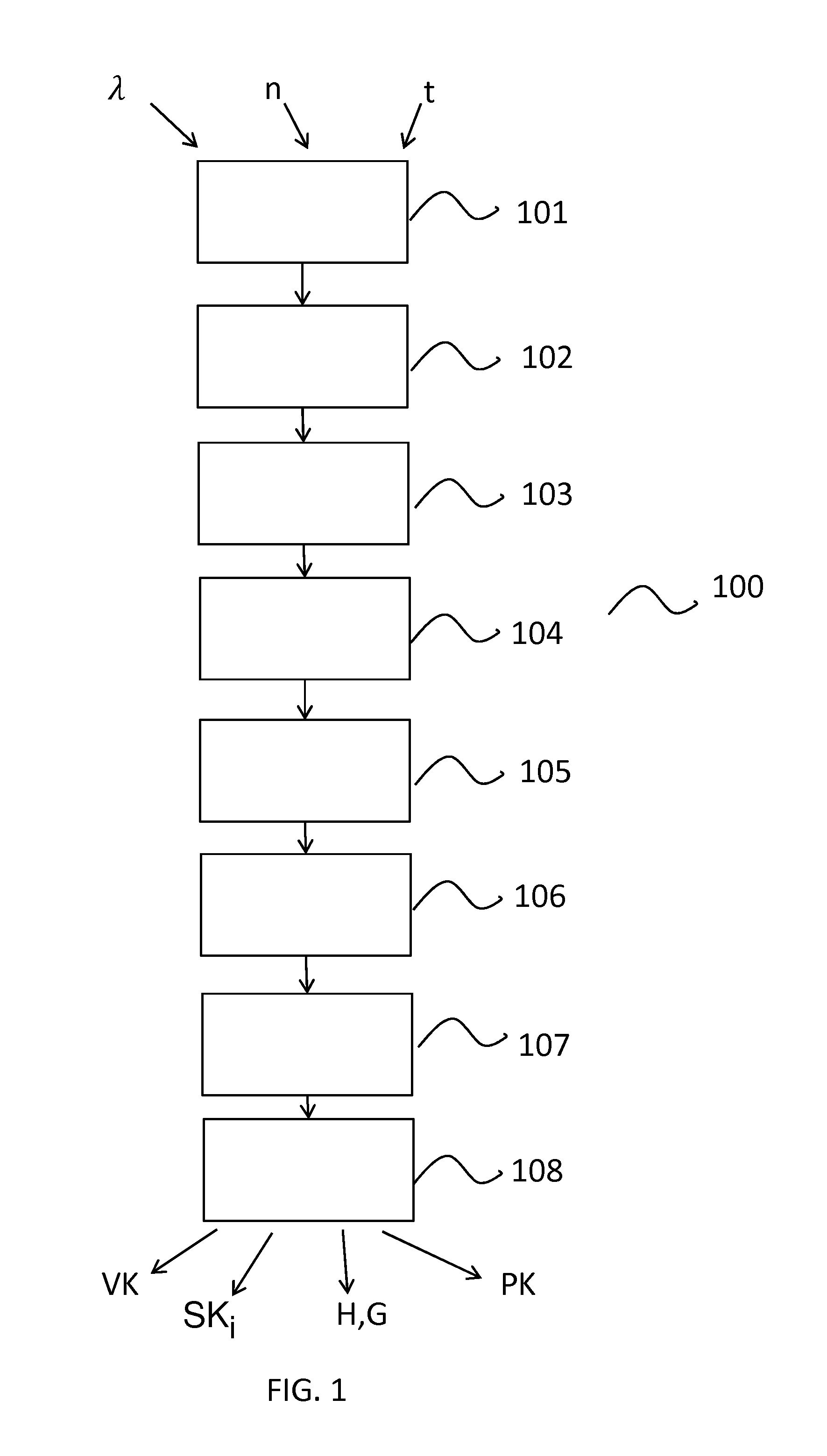Threshold cryptosystem, corresponding electronic devices and computer program products
- Summary
- Abstract
- Description
- Claims
- Application Information
AI Technical Summary
Benefits of technology
Problems solved by technology
Method used
Image
Examples
Embodiment Construction
[0080]FIG. 1 discloses a flowchart which depicts steps performed during the key generation process according to one embodiment of the disclosure.
[0081]In order to generate private keys that are then stored on electronic devices (such as servers), and a corresponding public key, the following steps of a key generation process, referenced 100, are performed by an electronic device:[0082]Obtaining a security parameter λ (that is initialized or chosen by a user for example), and a number t corresponding to the number of electronic devices that must participate in order to perform a decryption of an encrypted message (or plaintext), among a number n of potential electronic devices in the scheme;[0083]Choosing, in a step referenced 101, a DDH (which stands for “Decisional Diffie-Hellman”)-hard group of prime order p>2λ (e.g. a group of prime order with no efficiently computable bilinear map);[0084]Picking, in a step referenced 102, random elements in the chosen group and in p.
g,hR,andx,...
PUM
 Login to View More
Login to View More Abstract
Description
Claims
Application Information
 Login to View More
Login to View More - R&D
- Intellectual Property
- Life Sciences
- Materials
- Tech Scout
- Unparalleled Data Quality
- Higher Quality Content
- 60% Fewer Hallucinations
Browse by: Latest US Patents, China's latest patents, Technical Efficacy Thesaurus, Application Domain, Technology Topic, Popular Technical Reports.
© 2025 PatSnap. All rights reserved.Legal|Privacy policy|Modern Slavery Act Transparency Statement|Sitemap|About US| Contact US: help@patsnap.com



